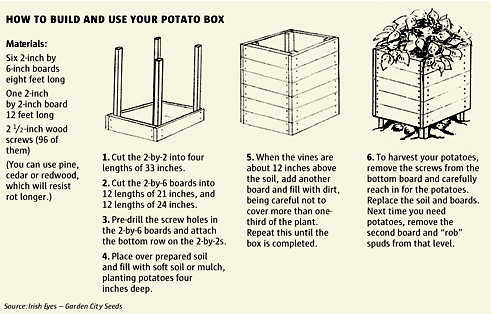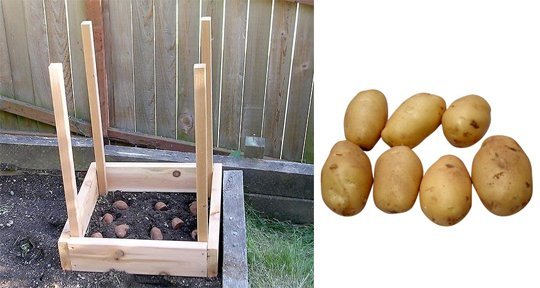Do you love growing spuds but you don’t have room in your garden to have rows of mounding hills? By building a “potato box” you’ll increase your yield of food without having to use more square feet in your garden space. Plus, by using this method or one similar, you can grow up to 100 lbs. of potatoes without taking up much room in your garden at all!
Here are some pointers from the original article over at “ApartmentTherapy.com“!
- Cut apart larger seed potatoes, making sure there are at least two eyes in each piece you plant.
- Dust the cut pieces with fir dust, which seals the open ends from bacteria.
- Fertilize with 10-20-20 fertilizer at planting and a couple of times during the season.
- Water so that the plants are kept at an even level of moisture.
- Don’t plant in the same area in consecutive years or use the same soil to fill your potato box, as potatoes can attract various diseases.”























Potatoes, like their relatives tomatoes, have two basic growth patterns, determinate and indeterminate.
Early potatoes are usually determinate. They grow to maturity, produce their crop nearly all at once, in a neat little nest of potatoes all at one level under the plant. (Similar to a bush tomato cropping all at once, when it has reached its “determined” mature height.) Yukon gold is one determinate type, and will disappoint if grown in a box. (I tried – twice.)
Later potatoes are usually indeterminate. Like an indeterminate tomato vines climbs and produces fruit over a longer period of time, and indeterminate potato’s roots can be encouraged to stretch and produce its crop all along its underground stems. These are best for growing in boxes or buckets. Kennebec is an indeterminate type.